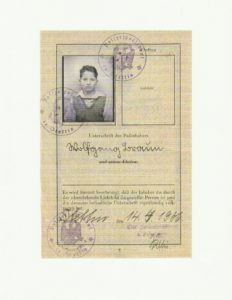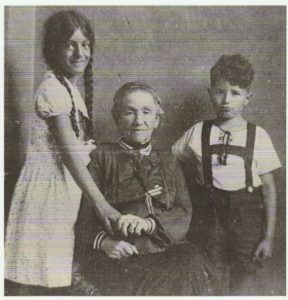In honor of Yom Hashoah, or Holocaust Remembrance Day in Israel, as well as the 75th anniversary of the end of World War II, we are exploring some of the stories in our Jewish History collections at Ramsey Library Special Collections. This week is the second installment of our Remembering the Holocaust series. Like Hilde Hoffman (from our previous post), Wolfgang Richard “Dick” Braun was a child during the rise of the Nazis. From recalling the prejudice he experienced at the hands of his fellow students to remembering the signs hung in public places saying “Jews not wanted,” Dick’s story shows us what it meant to internalize these abuses as a child, to accept them as “the order of things.”
“The Order of Things”
Dick Braun’s Story

“The Germans swallowed Hitler lock-stock-and-barrel because he promised them a rebuilding of a greater Germany and he was well on his way,” remembered Wolfgang Richard “Dick” Braun. Dick was the son of affluent, well-educated parents who believed there was no way the good Germans could really subscribe to the Nazis’ silly propaganda. However, after reading Mein Kampf, Dick’s father took Hitler at his word and knew Hitler was very serious about his plans.
Dick’s memories of Nazi Germany were through the eyes of a child, as he was around 10 or 11 when Hitler came to power. Dick recalled kids coming to school in brown Hitler Youth uniforms and all the teachers wearing swastika buttons on their clothing. Eventually, Dick asked to be excused from the outings his class would take. These outings were part of the official school curriculum and involved things like hiking and were designed to help the kids develop an appreciation of nature. However, as Nazi ideals and prejudices continued gaining hold in German society, children like Dick experienced harassment and abuse at the hands of their fellow students. Dick remembered having to run away at times because it would become physical.

The racism didn’t just stop at school, though. Dick recalled seeing Nazi flags flying outside of people’s windows on holidays and knowing immediately what this meant–these individuals were antisemitic. They didn’t like people like Dick or his family. Dick also remembered seeing signs in public places that said things like “Jews not wanted.” He didn’t remember these things as painful, exactly, because children don’t really have any perspective on this. They simply see these sorts of prejudice and accept it as “the order of things.” Dick also recalled another tool of racism that the Nazis used called an Ahnenpaß, which was a sort of “ancestry pass.” These documents could be used to separate Jews from non-Jews and allow people like police officers to single out Jews for mistreatment. According to these documents, being 1/8 Jewish made you a Jew. Dick related it to racial distinctions that were made in the United States, where a drop of Black blood made you Black.

Dick’s father, who was a physician, lost his practice in 1935 due to the Nuremburg Laws. It was then that Dick’s father decided they had to leave Germany. The elder Braun left for England to see whether this country would be a suitable place to relocate his family. While in England, Dr. Braun decided to travel to the United States as well and, after locating some family in the U.S. who were willing to provide the Brauns with affidavits, Dr. Braun decided the family would be relocating to the U.S. The Brauns were luck in that their entire family, save for Dick’s elderly paternal grandmother, made it out of Germany alive. As for Dick and his parents, they lived in Manhattan where life remained difficult as the U.S. was in the midst of a depression and Manhattan was overrun with doctors, making it more difficult for Dick’s father to find work.
Dick’s experiences are a painful reminder of the effects and influences that our beliefs and political policies have on children. Even though many gentile children previously had no issue with Jewish children, they learned this behavior from their parents and government. Even though Jewish children previously noticed no difference between themselves and their peers, they were taught to understand that they were separate and lesser. These lessons are internalized and, although it is possible to undo such social conditioning, the memories of segregation and hate and exclusion will remain.
Dick’s story is part of the Choosing to Remember: From the Shoah to the Mountains collection at D.H. Ramsey Library Special Collections, located at the University of North Carolina Asheville. This collection is a compilation of oral histories of Holocausts survivors. For more information on Dick and other survivors’ stories, visit Ramsey Library Special Collection’s online finding aid.
If you are interested in exploring more Holocaust survivor history, please see our newly processed collection, the Sharon Fahrer Holocaust Collection.
– Kristen Byrnes
